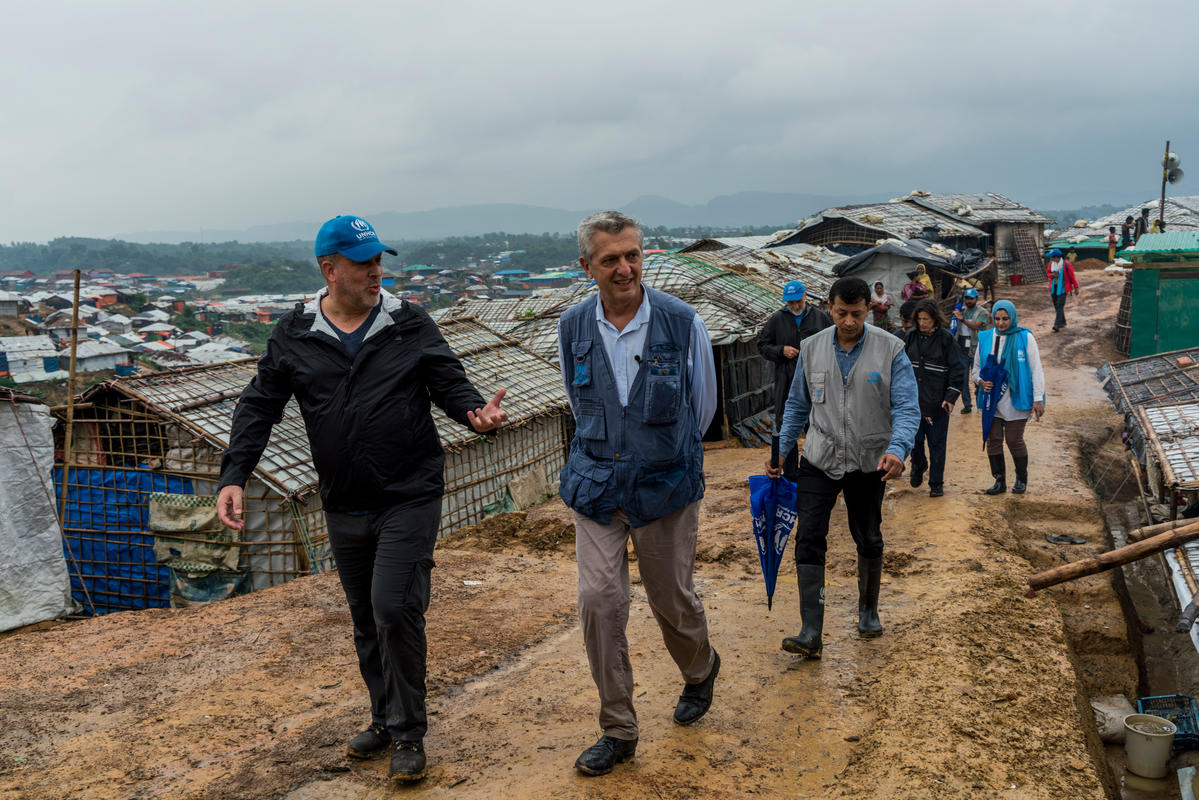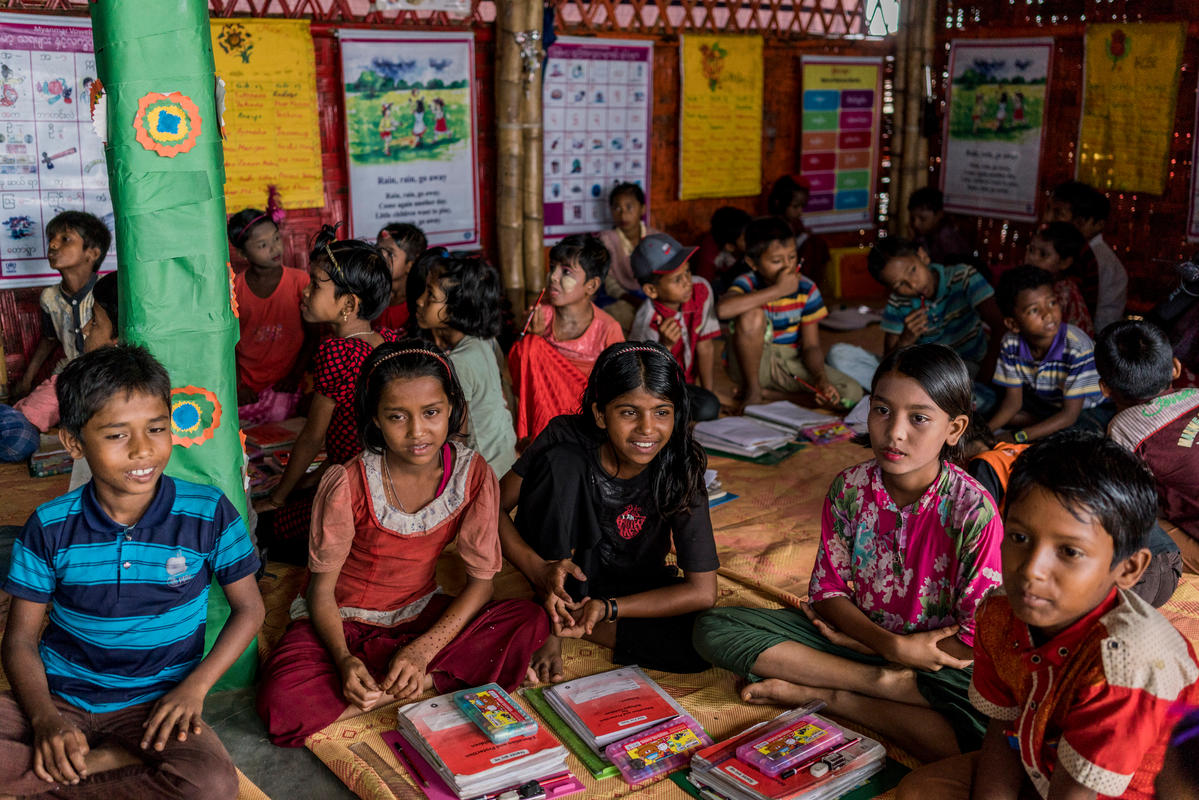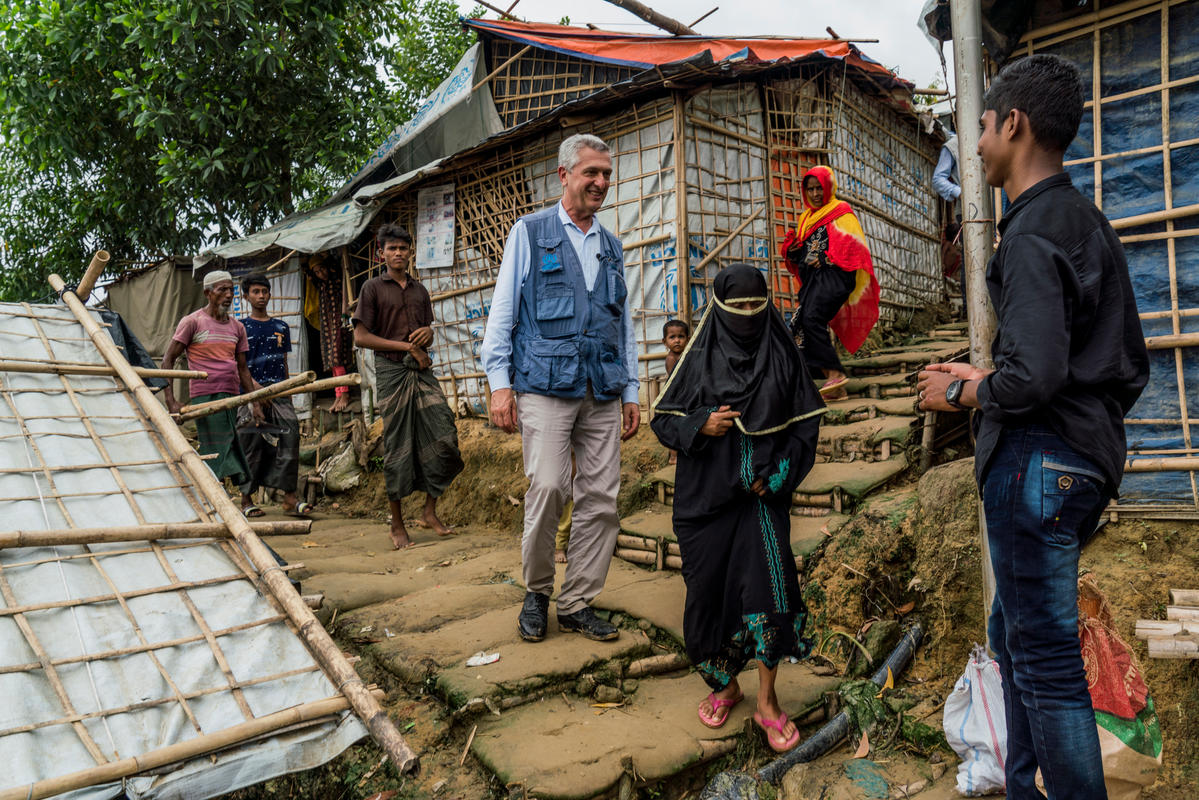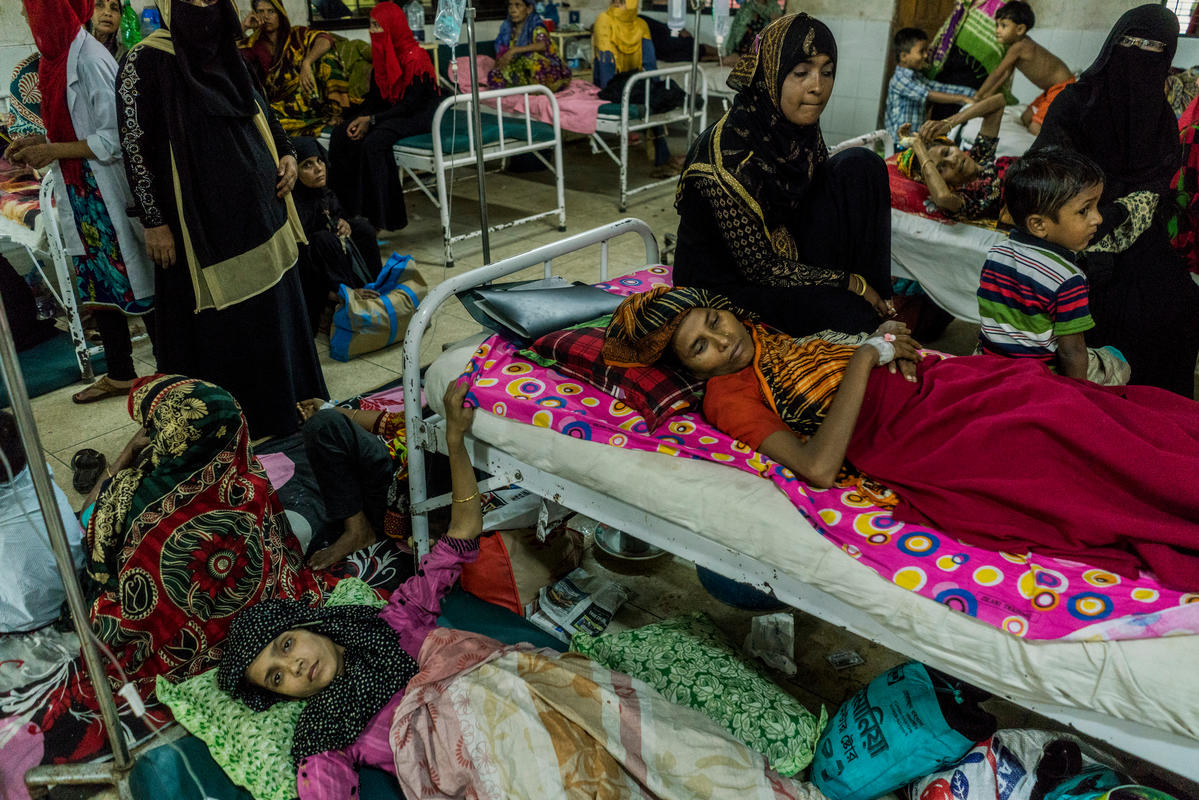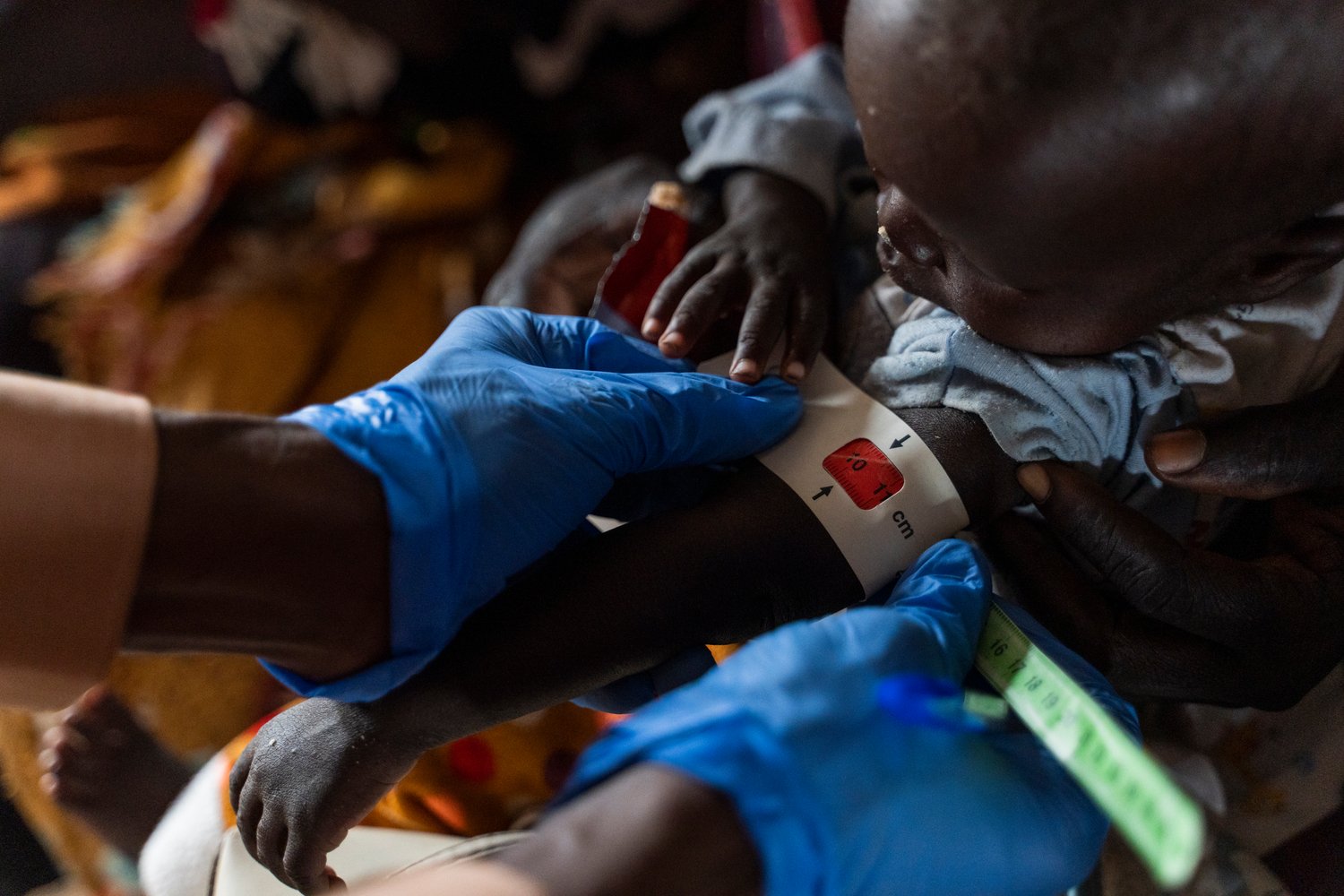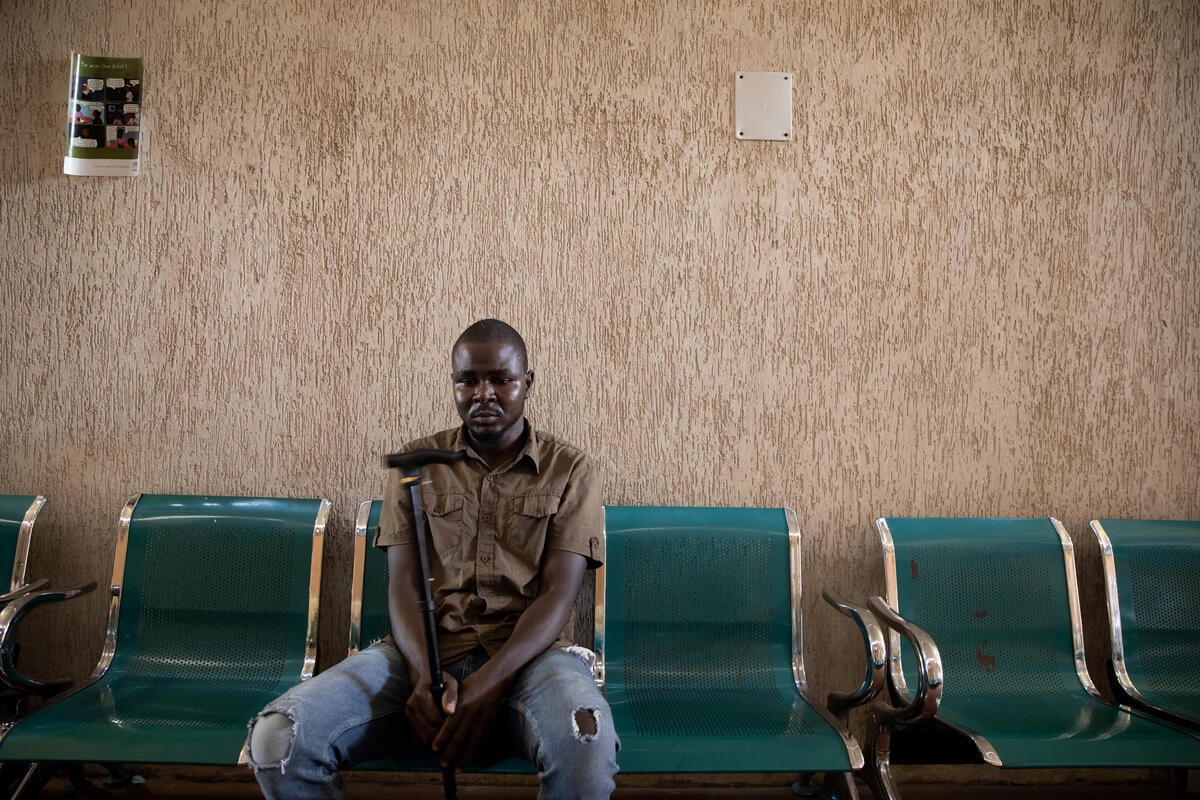Sustainable response key to ongoing Rohingya displacement
As rain hammered on the roof of their classroom, the children raised their voices to belt out a song from their native Myanmar. For a moment, it drowned out the downpour.
Singing is one of the activities offered at the one-room learning centre in the world’s largest refugee settlement which the six- to nine-year-old pupils take to with great gusto.
For just two hours a day, the mixed class learn the basics of reading, writing and numeracy in their language, and English, before making way for the next of two classes of 40 students each, cycled through the school in the day.
Packed classes, short hours, limited materials and even monsoon rains and mud are just some of the obstacles to obtaining a very basic education on the frontlines of the Rohingya crisis, teachers say.
“The biggest challenge is that we don’t have a fixed curriculum, either from Myanmar or from Bangladesh,” said Jaivul Hoque, project manager at the centre in the heart of the sprawling settlement, adding: “It’s just primary education, there is no secondary education.”
“The biggest challenge is that we don’t have a fixed curriculum."
Ten months into the displacement of hundreds of thousands of Rohingya refugees from Myanmar – more than half of them children – addressing their longer-term needs is becoming a key focus of the humanitarian response.
Visiting the vast settlement today, UN High Commissioner for Refugees Filippo Grandi took off his shoes, sat down on a mat on the floor, and spent time with the children and their teachers
Taking to a muddy pathway, dodging monsoon downpours, he also toured an integrated health centre in the settlement, offering primary care, mother and child clinics, nutrition support and mental health counseling to refugees who have experienced horrific violence in Myanmar.
Almost one million Rohingya refugees live in Bangladesh, most fleeing a military crackdown in Myanmar last August.
Grandi saw at first hand the challenging conditions they face living in fragile homes clinging to steep hillside terrain, with hand-dug bamboo and brick drains, no electricity and only hand-pumped water from tubewells.
As their displacement draws on, the High Commisioner said greater resources must be found to develop education, health care and infrastructure to build a more sustainable life for them and their hosts.
“We are continuing to run an emergency response … with the monsoon … but we need to prepare already for at least the medium term,” he said.
His visit to the camp followed a high-level mission with UN Secretary-General António Guterres, World Bank Group President Jim Yong Kim and UNFPA Executive Director Natalia Kanem earlier in the week to rally support for refugees and their hosts.
As part of a concerted effort to help Bangladesh address both their needs and that of host communities, the World Bank Group last week announced close to half-a-billion US dollars in grant-based support for areas including education, health, water and sanitation – funding which Grandi said would be central to unlocking a sustainable response.
“The contribution of the World Bank … will be key to resource a more integrated system, a more inclusive system, that can really offer sustainable services to this population,” Grandi said.
Current conditions in Myanmar do not allow for a safe and dignified return for refugees. Supporting Rohingya education would allow the current “ad hoc schools” where children are taught “a little bit of this and that,” to become a standardized education that continued through secondary levels.
“If we don’t structure that properly in a manner that is standardized and offers a proper curriculum to all children, primary and secondary education, you really risk losing big time on a generation of children,” he said.
“We don’t make distinctions between Rohingya and Bangladeshis. They are all patients.”
Major investments would also go to providing infrastructure in the vast refugee’s settlement, as well as supporting the government in providing healthcare for both refugees and Bangladeshis alike.
After touring the Kutupalong settlement on Tuesday, Grandi concluded his visit to Bangladesh at the overstretched district hospital in Cox’s Bazar, where he witnessed the challenges facing the health system, which offers the best care it can for locals and refugees.
Built with a capacity of 250 beds, Sadar Hospital currently has 528 patients, including some 50 Rohingya refugees. Overcrowding in some wards meant some lay temporarily on mattresses on ward floors or out in corridors. Medical staff at the district’s hospital said they would welcome more funding, including to extend inpatient wards.
“We don’t make distinctions between Rohingya and Bangladeshis. They are all patients,” said medic Mohammad Rahalid. “The funds are needed, and they would benefit both communities.”


